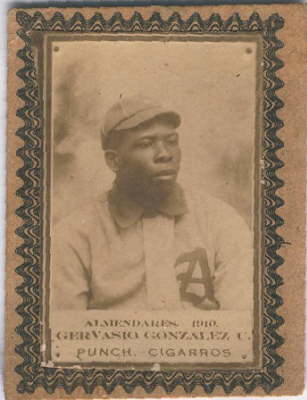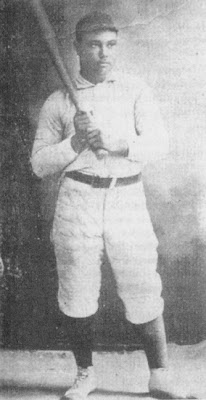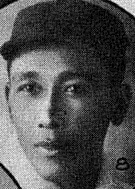Related Research Articles

The Habana B.B.C. also known as the Habana Reds or, later, the Leones del Habana was one of the oldest and most distinguished baseball teams in the old Cuban League, which existed from 1878 to 1961. Habana, representing the city of Havana, was the only team to play in the league every season of its existence and was one of its most successful franchises. In their early history they were known by their colors as the Reds; later they adopted the names of Leones or Lions. Throughout their existence they had a famous rivalry with Almendares.
The All Cubans were a team of Cuban professional baseball players that toured the United States during 1899 and 1902–05, playing against white semiprofessional and Negro league teams. The team was the first Latin American professional baseball team to tour the United States. As a racially integrated team, future major league players Armando Marsans and Rafael Almeida got their start in the United States on the team. The team was also a forerunner for later Negro league teams staffed by Latin American players, such as the Cuban Stars (West), the Cuban Stars (East), and the New York Cubans. Negro league stars Luis Bustamante and Carlos Morán started their American careers with the All Cubans.
The Cuban Baseball Hall of Fame is a hall of fame that honors eminent baseball players from Cuban baseball. Established in 1939 to honor players, managers, and umpires in the pre-revolution Cuban League, by 1961 it had honored 68 players, managers, and umpires whose names are shown on a marble plaque at Havana's Estadio Latinoamericano. After the revolution, however, the Hall of Fame languished for more than 50 years, seldom mentioned or acknowledged and with no new inductees. Following a campaign led by Cuban filmmaker Ian Padrón, a meeting was held on November 7–8, 2014 to reformulate the Hall of Fame and to propose a museum in which it would be housed. The reformulated Hall recognized the original 68 members, and a jury of 25 people selected 10 new inductees—five from the pre-revolution period and five representing for the first time the post-revolution Cuban National Series. The planned site for the new museum is in the José Antonio Echeverría Workers' Social Club.

Gervasio González "Strique" Ojarul was a Cuban baseball catcher in the Cuban League and Negro leagues. He played from 1901 to 1917 with several ballclubs, including San Francisco, Almendares, Club Fé, Habana, Azul, and the Cuban Stars (West). He was elected to the Cuban Baseball Hall of Fame in 1939.

Valentín "Sirique" González was a Cuban baseball center fielder in the Cuban League. He played from 1890 to 1912 with several ballclubs, mostly with the Habana club. He also played for the Jacksonville Jays of the South Atlantic League in 1905 and 1906. He was elected to the Cuban Baseball Hall of Fame in 1939.

Julián Castillo Calderón de la Barça was a Cuban professional baseball first baseman in the Cuban League and Negro leagues.

Luis "El Mulo" Padrón Otorena was a Cuban professional baseball corner outfielder, pitcher and third baseman in the Negro leagues and Cuban League.

Carlos "Chino" Morán Benavides was a Cuban professional baseball third baseman and outfielder in the Cuban League and Negro leagues.

Rogelio Valdés was a Cuban professional baseball outfielder, shortstop and player manager in the Cuban League and Negro leagues. He played from 1899 to 1917 with several ballclubs, including Almendares, Habana, Cuban Stars (West), and the All Cubans. In 1908, Valdés both managed and played for Azul.
The Long Branch Cubans were a professional baseball team that played from 1913 to 1916. It was the first U.S. minor league baseball team composed almost entirely of Cubans. Several players, including Dolf Luque and Mike González, went on to play in the major leagues. The Cubans played in Long Branch, New Jersey from 1913 to 1915, except for the first half of the 1914 season, when they played in Newark, New Jersey. In 1916, they started the season playing in Jersey City, New Jersey as the "Jersey City Cubans." Later that summer, they moved their home games to Poughkeepsie, New York, where they were usually referred to as the "Long Branch Cubans." In late July 1916 they briefly moved to Harlem and finally to Madison, New Jersey in August.

Alfredo Arcaño was a Cuban baseball left fielder in the Cuban League. He played from 1888 to 1909 with several ballclubs, mostly with the Habana club. He was elected to the Cuban Baseball Hall of Fame in 1940.
Francisco "Frank" Morán Benavides was a Cuban baseball outfielder and catcher in the Cuban League and Negro leagues.
Azul were a Cuban professional baseball team. They played from 1904 to 1908 featuring players mostly from the Cuban League. They won the Cuban Summer Championship in 1904 and 1907 under manager Evaristo Plá.
Eminencia were a Cuban baseball team that played in the Cuban Summer Championship in 1905. The club featured players mostly from the Cuban League and were managed by Alberto Azoy.

Juan Padrón Acosta was an American Negro league and Cuban League pitcher in the 1910s and 1920s.
Rogelio Alonso was a Cuban outfielder in the Negro leagues between 1927 and 1930.

Luis González was a Cuban pitcher in the Negro leagues and Cuban League in the 1900s and 1910s.
References
- ↑ "1905 Eminencia at the Seamheads Negro Leagues Database". www.seamheads.com. Retrieved 2021-04-24.
- ↑ Alfredo Arcaño Negro league statistics
- ↑ Julián Castillo Negro league statistics
- ↑ Gervasio González at Baseball-Reference
- ↑ Valentín González Negro league statistics
- ↑ Carlos Morán at Baseball-Reference
- ↑ Luis Padrón at Baseball-Reference
- ↑ Rogelio Valdés at Baseball-Reference